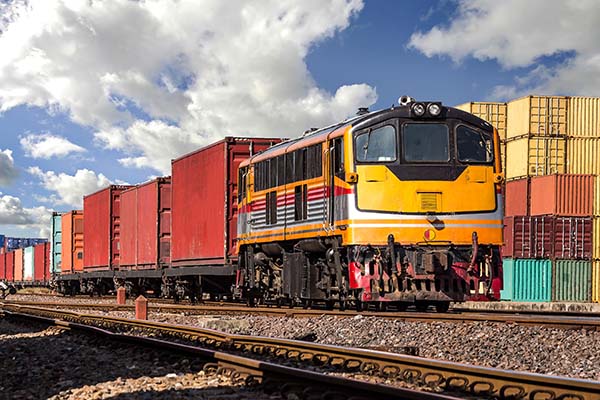Oregon Rep. Blumenauer makes move for permanent short-line railroad tax credit
Last week, Rep. Earl Earl Blumenauer (D-Ore.) made another push, in the form of new legislation, to make a short-line railroad tax credit permanent.
Last week, Rep. Earl Earl Blumenauer (D-Ore.) made another push, in the form of new legislation, to make a short-line railroad tax credit permanent.
Blumenauer’s legislation-H.R. 510 To amend the Internal Revenue Code of 1986 to permanently extend the railroad track maintenance credit, and for other purposes-was referred to the House Committee on Ways and Means on January 11, with a summary of the legislation not available at press time.
The short line railroad tax credit, known as 45G, assists the 603 short line railroads in upgrading their track and bridges in order to handle modern freight cars, according to the American Short Line and Regional Railroad Association (ASLRRA), adding that under the terms of 45G a short line railroad must invest $1 for every 50 cents in credit up to a credit cap equivalent to $3,500 per mile of track while allowing the rail industry to spend more of their own revenue to make rail transport safer and more efficient for more than 10,000 United States customers.
The 45G tax credit, which expired on December 31, 2015, was implemented in 2005, and since that time the ASLRRA said that it has enabled short line and regional railroads to invest $4 billion into infrastructure, with 2,140 rail miles improved in 2015, the last year for which data was reported), 5.27 million ties replaced, with the short line industry doling out $1.12 million, or 24%, of revenue on infrastructure.
Along with the potential permanent expansion for 45G, a 2018 Morgan Stanley research report said that in exchange for making the credit permanent, the bill reduces the 45G tax credit from 50% to 30%. The firm noted that the 50% to 30% reduction is sensible in that it removes “the hassle of voting for a credit every year.
At the Rail Trends conference in New York City, which was hosted by Progressive Railroading magazine and independent railroad analyst Tony Hatch in November 2018, the topic of the 45G tax credit received a fair amount of attention.
Chuck Baker, a longtime Rail Trends speaker and president of the National Railroad Construction & Maintenance Association, said at the event that this 45G proposal would keep the same cap of $3,500 per track mile, coupled with lowering the rate from 50% to 30%.As previously reported, the ASLRRA has said that 45G “represents real and immediate infrastructure investment and job creation that preserves transportation and economic development opportunities.”
Railroad stakeholders have said that this is really about is about keeping short line railroad customers connected to the national railroad network with adequate and safe rail service, which makes this provision has such broad appeal.
There are more than 500 short line railroad carriers in 49 states, which serve as the first and last mile for more than 11,000 rail shippers. And preserving and upgrading short line railroad tracks is critically important to so many economies and communities throughout the U.S.
When freight railroads were deregulated in the U.S. in 1980 through the Staggers Act, there were 200 short line railroads, and today there are more than 550. Deregulation in effect encouraged the creation of short lines, which would have otherwise been abandoned, and short lines were previously owned by Class I railroads whom did not want to operate them anymore, because they were not part of the Class I’s core networks and were not financially viable for them, although they were financially viable for short line operators.
What’s more, abandoned short lines had suffered from decades of deferred maintenance, which supported the point of passing the tax credit to create a way of effectively lowering the costs of infrastructure upgrades so that more infrastructure upgrades could take place and preserve rail lines that would have otherwise been abandoned.













